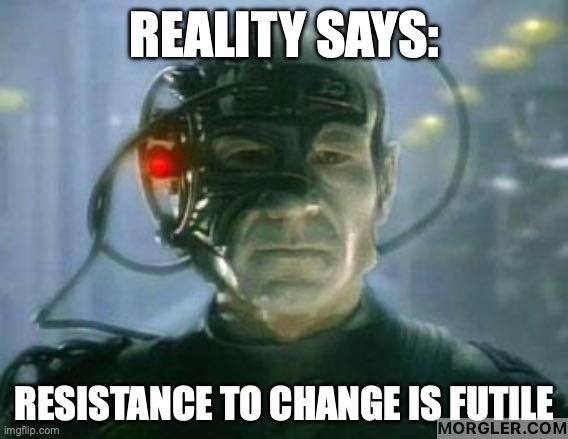Once upon a time – not that long ago – product development was a slow, stately dance. A new idea emerged every few years, maybe once a decade. Companies would then spend years perfecting its execution: reducing waste, streamlining processes, optimizing error rates.
It was the golden age of mass production. And the gods of the age were efficiency, predictability, and control.
But then the 21st century happened.
Suddenly, entire markets began shifting in weeks, not years. Startups launched, pivoted, and dominated before established players finished their planning cycles. Chinese hardware companies now iterate entire chip designs in a matter of days. Tesla iterated through its early quality issues not by slowing down, but by turning speed itself into a competitive advantage.
What changed?
The dominant cost driver flipped. From waste and defects → to change itself.
In the old world, change was rare and expensive. Now, not changing fast enough is what will kill you.
Why Agile Actually Works
Agile isn’t magic. It’s not a productivity trick. It works because it lowers the cost of change.
- Instead of betting big upfront, agile lets you place small, recoverable bets.
- Instead of assuming you know the customer, you discover their truth through fast feedback.
- Instead of building perfectly efficient machines, you build resilient, learning systems.
And the data backs this up:
- A McKinsey study showed agile organizations achieve 30–50% faster time to market, 20–30% cost efficiency gains, and significantly higher employee engagement (source).
- Research in the Harvard Business Review found that iterative development outperformed stage-gate innovation in industries as diverse as pharma, consumer electronics, and software (source).
- Google’s famous Project Aristotle showed psychological safety – a key enabler of fast failure and rapid change – was the number one driver of effective teams (source).
How You Know You’re Still Playing the Old Game
You can tell when a company hasn’t made the leap.
- They talk about agility, but measure velocity.
- They have product owners, but projects are still scoped top-down.
- They call it a “sprint,” but it’s a two-week waterfall.
- Failure is still punished. Replanning is frowned upon. Control is tighter than ever.
They’re trying to be agile in a Fordist operating system.
What they miss is this: agility isn’t about speed. It’s about adaptability. And adaptability doesn’t come from rituals. It comes from how you treat people when things go wrong.
The Moment Agility Gets Real
If you’ve ever seen this moment, you don’t forget it.
A team ships a feature. The customer hates it. The sprint goal collapses. All eyes turn to the leader.
And instead of scolding them, the leader says:
“Great. We just learned something valuable.”
That’s the moment everything shifts.
People realize: I won’t be punished for trying.
They speak up. They take initiative. They take risks. They start leading – even without a title.
You can literally see it in their eyes. The light goes on.
And once it does, they become contagious.
They infect others with agency. They model resilience. They make agility real.
That moment doesn’t come from a better Jira setup or a fancier OKR framework. It comes from one human choice: assume positive intent.
Agility Begins with How You See People
At the heart of every real agile transformation is a shift in the view of the human being.
- Do you believe people need to be tightly managed, extrinsically motivated, and constantly monitored?
- Or do you believe they want to do meaningful work, learn, and improve – if the system lets them?
The first view leads to fear, blame, rigidity, and politics. The second view leads to learning, ownership, and innovation.
And your view becomes their behavior.
When you treat people like they’re trying to avoid work, they do.
When you treat them like they want to grow, they grow.
And when you create a culture where change is safe, change becomes cheap.
What to Do Next
Most companies are still running a 20th-century playbook in a 21st-century game. If you measure success by minimizing waste, you’re solving yesterday’s problem.
Want to win today? Shift your focus:
- From efficiency to optionality.
- From predictability to resilience.
- From utilization to adaptability.
And above all: from controlling people to unlocking them.
Learn more in the ACE program: Agile Coach Evolution – where we go beyond frameworks to help coaches and leaders drive real agility, not theater.

